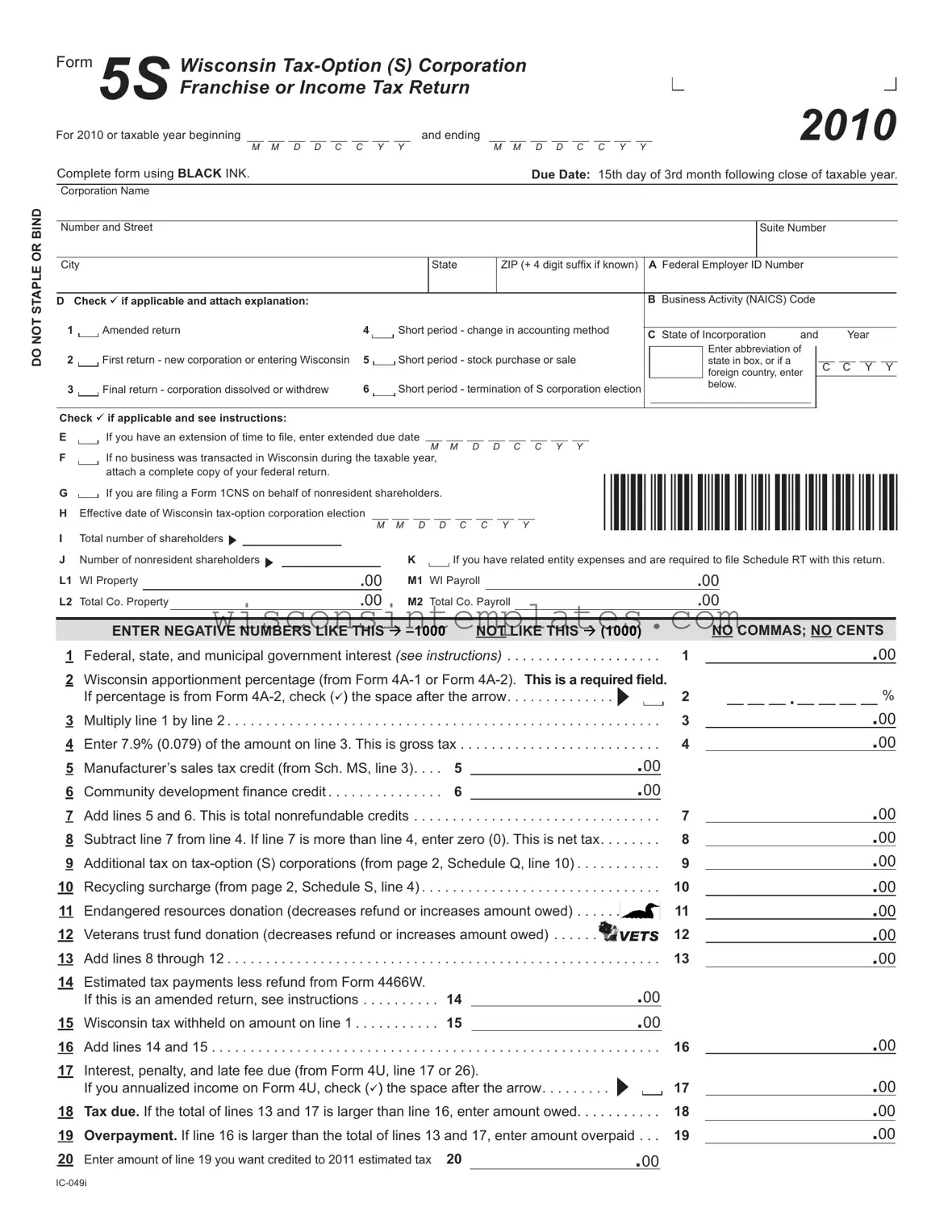The Wisconsin 5S form serves as a crucial document for tax-option (S) corporations operating in the state. This form is used to report franchise or income tax returns, specifically for the 2010 tax year or any taxable year that begins and ends during that period. Corporations must complete the form using black ink and submit it by the 15th day of the third month following the close of their taxable year. Key sections of the form require information such as the corporation's name, address, and federal employer identification number. Additionally, it asks for the state of incorporation, the number of shareholders, and specific details regarding business activities. The form also includes calculations for gross tax, nonrefundable credits, and any applicable additional taxes or surcharges. Corporations are required to attach a complete copy of their federal return if no business was conducted in Wisconsin during the taxable year. Furthermore, the form prompts for information regarding related entity expenses and any adjustments made by the IRS to prior years' income. Completing the Wisconsin 5S form accurately is essential for compliance and to avoid potential penalties.
